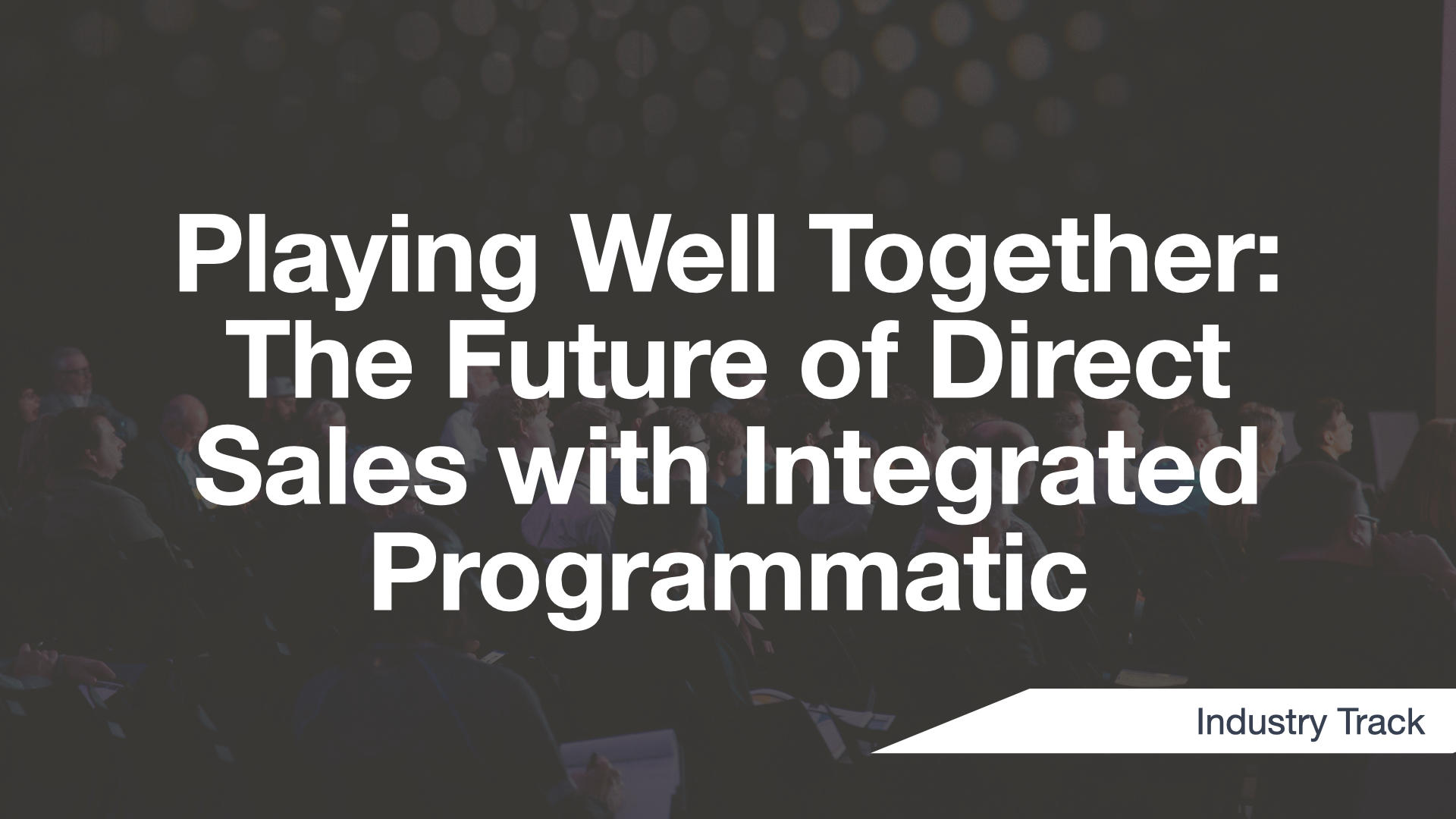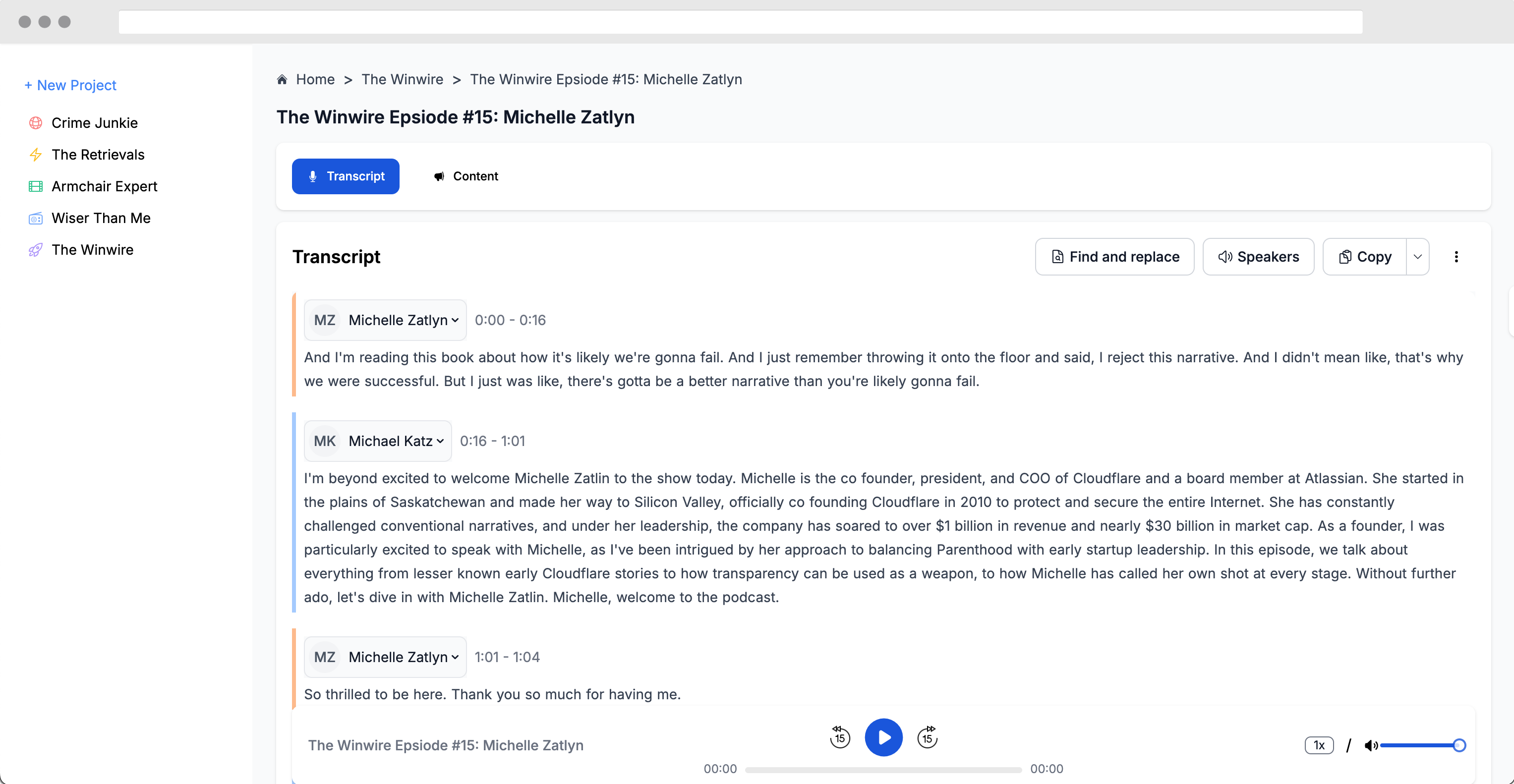Playing Well Together: The Future of Direct Sales with Integrated Programmatic

Key Takeaways
Programmatic Advertising's Reach and Scale: Programmatic advertising allowed buyers to reach a broader audience across numerous podcasts more efficiently than manual methods. This approach enabled targeting specific audiences without the need for individual deals with each podcast.
Data-Driven and Unbiased Buying: Programmatic advertising provided a data-driven approach to ad buying, reducing biases and allowing advertisers to reach their audience wherever they were. This method aligned with the expectations of digital buyers, offering extensive reporting and optimization capabilities.
Optimization and Inventory Management: Publishers could optimize their inventory by using programmatic channels to sell more ad space. Tools like Flightpath helped forecast and monitor ad performance, ensuring that publishers maximized their revenue potential.
Brand Safety and Suitability: Programmatic advertising enabled pre-bid targeting at the episode level, ensuring that ads met brand safety standards and did not appear next to unsuitable content. This feature was crucial for large brands that required consistent messaging across all media channels.
Challenges and Risks: The primary risk for publishers was not utilizing programmatic advertising enough to sell their inventory. Understanding and managing inventory effectively was essential to avoid missing revenue opportunities.
Overview
The panel, featuring Sean Howard (CEO of Flightpath), Tamara Zubatiy (CEO and co-founder of Barometer), and Mike Reznick (COO of SoundStack), focused on the future of direct sales and integrated programmatic advertising in podcasting. They discussed the advantages of programmatic advertising, emphasizing its ability to reach and scale audiences more efficiently than manual methods.
Tamara highlighted how programmatic can debias the buying process and align with digital buyers' expectations through data-driven approaches. Mike pointed out that programmatic allows publishers to optimize their inventory and achieve higher sell-through rates. They also addressed the challenges and risks, such as ensuring brand safety and managing inventory effectively.
The conversation underscored the importance of understanding and categorizing inventory to meet the demands of large brand buyers and the potential for programmatic to transform the podcast advertising landscape.
Core Concepts
Programmatic Advertising's Reach and Scale
Programmatic advertising significantly enhanced the ability to reach a vast audience across multiple podcasts, surpassing the limitations of manual ad placements.
Key Points:
Programmatic advertising allowed buyers to purchase ad space across numerous podcasts efficiently.
It enabled targeting specific audiences without the need for individual deals with each podcast.
This approach was particularly beneficial for reaching listeners of smaller podcasts that might not be included in direct deals with major networks.
Examples:
A buyer could target a specific demographic across hundreds of podcasts with a single order, reaching listeners who might not be part of the largest shows.
Programmatic advertising allowed advertisers to reach audiences that were previously inaccessible due to the manual nature of direct deals.
Quotes:
You can literally buy more podcasts with the people that you want to reach than you can possibly do in a manual nature.
What about the rest of the world that's listening to other podcasts that they love just as much as the millions that are listening to the biggest ones?
Data-Driven and Unbiased Buying
Programmatic advertising provided a data-driven approach to ad buying, reducing biases and allowing advertisers to reach their audience wherever they were.
Key Points:
Programmatic advertising offered a more data-driven and unbiased approach to ad buying.
It aligned with the expectations of digital buyers, providing extensive reporting and optimization capabilities.
This method allowed advertisers to reach their audience based on data rather than assumptions.
Examples:
An advertiser could use programmatic advertising to reach their target audience across various podcasts, regardless of their initial assumptions about where their audience might be.
Programmatic advertising provided detailed reporting and optimization capabilities, allowing advertisers to adjust their campaigns based on real-time data.
Quotes:
Programmatic is a really amazing vehicle to debias your buying process.
There's a lot of signals, there's a lot of reporting, and there's a lot of information that a buyer can use to then optimize.
Optimization and Inventory Management
Publishers could optimize their inventory by using programmatic channels to sell more ad space, ensuring maximum revenue potential.
Key Points:
Publishers could optimize their inventory by using programmatic channels to sell more ad space.
Tools like Flightpath helped forecast and monitor ad performance, ensuring that publishers maximized their revenue potential.
Effective inventory management was crucial for publishers to avoid missing revenue opportunities.
Examples:
A publisher could use programmatic advertising to sell ad space that was not covered by direct deals, increasing their overall revenue.
Tools like Flightpath allowed publishers to forecast ad performance and adjust their inventory management strategies accordingly.
Quotes:
You want to sell as much of it as possible because that's going to allow you to produce more shows, produce more content, become a bigger media company.
There's various ways to do that, right? There's the direct sold that we're talking about. And that's a, you'd oftentimes, that's through a salesforce.
Brand Safety and Suitability
Programmatic advertising enabled pre-bid targeting at the episode level, ensuring that ads met brand safety standards and did not appear next to unsuitable content.
Key Points:
Programmatic advertising allowed for pre-bid targeting at the episode level, ensuring brand safety.
This feature was crucial for large brands that required consistent messaging across all media channels.
Programmatic advertising reduced the manual effort required to enforce brand standards.
Examples:
A brand could use programmatic advertising to ensure their ads did not appear next to content that did not meet their safety standards.
Programmatic advertising allowed for episode-level targeting, ensuring that ads were placed in suitable contexts.
Quotes:
What programmatic enables is the ability to do pre-bid targeting or actually content item level, episode level targeting before you buy.
Programmatic is what allows them to find their target audience, and they want their produced, creative, customized a little bit for podcasts.
Challenges and Risks
The primary risk for publishers was not utilizing programmatic advertising enough to sell their inventory, emphasizing the importance of effective inventory management.
Key Points:
The primary risk for publishers was not utilizing programmatic advertising enough to sell their inventory.
Effective inventory management was essential to avoid missing revenue opportunities.
Understanding and managing inventory effectively was crucial for maximizing revenue potential.
Examples:
A publisher who did not use programmatic advertising might miss out on revenue opportunities by not selling all of their available ad space.
Effective inventory management allowed publishers to optimize their ad placements and maximize their revenue potential.
Quotes:
I think the biggest risk is not doing enough of it.
Optimize your inventory. Understand what you have left to sell.
Conclusion
Programmatic advertising offered significant advantages for both advertisers and publishers in the podcasting space. It allowed advertisers to reach a broader audience more efficiently, provided a data-driven and unbiased approach to ad buying, and enabled effective inventory management for publishers. Additionally, programmatic advertising ensured brand safety and suitability through pre-bid targeting at the episode level. However, the primary risk for publishers was not utilizing programmatic advertising enough to sell their inventory, emphasizing the importance of effective inventory management. Overall, programmatic advertising represented a powerful tool for maximizing revenue potential and reaching target audiences in the podcasting space.
Food for Thought
How can publishers further optimize their inventory management strategies to maximize revenue potential?
What additional measures can be taken to ensure brand safety and suitability in programmatic advertising?
How can the podcasting industry continue to improve standardization and unification to facilitate growth and attract more advertisers?
Reference Tools, Platforms, and Resources
Flightpath: Predictive analytics tool for forecasting and monitoring ad performance.
Barometer: Contextual intelligence platform for ensuring brand safety and suitability in programmatic advertising.
SoundStack: Platform for the distribution of live streaming, podcast analytics, metrics, and monetization.

Seven of the top twelve buyers last month were new brand, big brand buys (Magellan report).
Large new brands can run hundreds of thousands, up to a million episodes in one week programmatically.
The podcasting industry is a couple billion dollar business, with 1% of the podcasts making all of the money (approximately 41,000 podcasts out of four to five million).
Programmatic channels can achieve an additional 30% sell-through for inventory.
Direct sales efforts can take 90 to 120 days to sell into growth, whereas programmatic provides instantaneous additional ad revenue.




